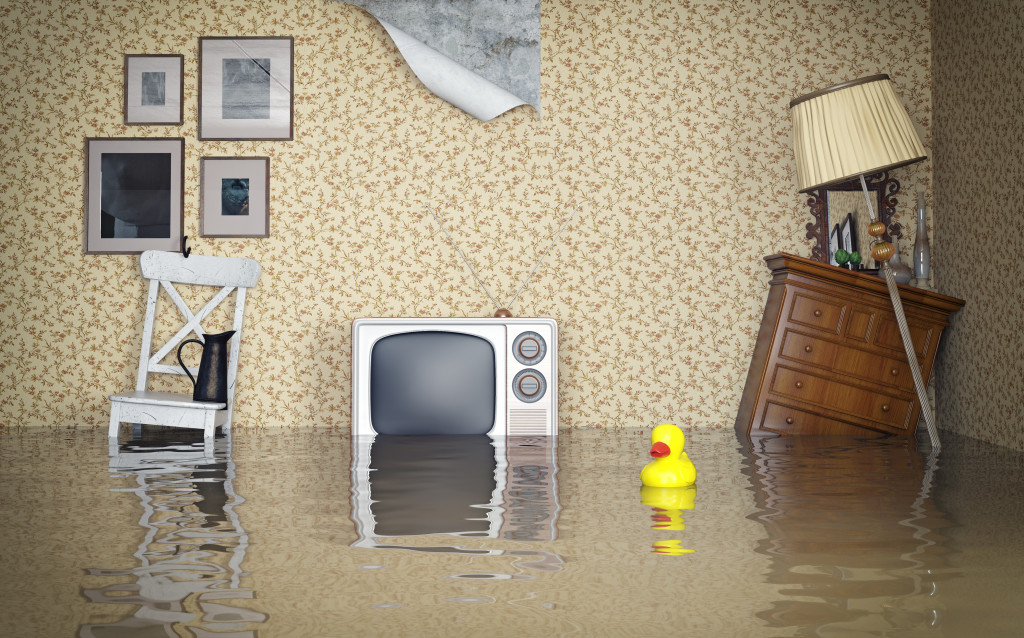- Basement flooding can occur due to heavy rainfall, sewer line blockage, sump pump failure, and home elevation.
- Living in an area with high rainfall or a low-lying location can increase the risk of basement flooding.
- Quick action is necessary to minimize damage and prevent flood-related health hazards.
- Calling emergency water damage restoration services is crucial for proper cleanup and restoration.
- It is important to safely remove water and debris and dry and disinfect the affected area after a flood.
A flooded basement is a nightmare that no homeowner wants to experience. Unfortunately, basement flooding can occur unexpectedly and can lead to significant damage to your property. If you have a basement, you need to understand the causes of basement flooding, the risk factors, and what to do next in case of a flood.
This article will explore all these essential aspects of basement flooding to help you prepare and prevent extensive damage to your home.
Causes of Basement Flooding

Several factors can cause basement flooding. One of the most common is heavy rainfall or rapid snowmelt. This can lead to excessive water runoff that seeps into your basement through cracks in the foundation or windows. Another culprit is a broken or blocked sewer line. When the sewer line is blocked, the wastewater has nowhere else to return to your home.
Similarly, sump pump failure can occur when the pump gets overwhelmed or stops functioning altogether, causing water to overflow and flood the basement. The elevation of your home can also increase your risk of flooding if you reside in a low-lying area or proximity to a body of water.
Risk Factors
Several risk factors can increase your likelihood of experiencing a flooded basement. For instance, if you live in an area with high rainfall, you’ll likely have to deal with basement flooding at some point. Similarly, if your home is at the bottom of a hill or slope, water will flow towards your house, increasing your risk of flooding.
The age of your home can also play a role in determining your risk level. Homes over 20 years old are more susceptible to foundation cracks and damage resulting in flooding. Additionally, if your home has frequent power outages, you are prone to sump pump failure, which can lead to basement flooding.
What to Do Next in Case of a Flood
Whatever the cause, it is essential to take quick action to minimize the damage and prevent health hazards. Here are some critical steps to take if you are in a flooded basement.
Assess the Situation
When you encounter flooding, the first thing to do is assess the situation. Check the source of the water and determine where it’s coming from. If it’s due to a burst pipe, turn off the water supply to avoid further flooding.
If it’s from outside, try to stop the water flow by sealing any openings and removing any furniture and other items to a safe place. It is vital to know the extent of the damage and identify any potential risks to your health and safety.
Call Emergency Water Damage Restoration Services

Water damage restoration companies specialize in cleaning up and restoring flood damage. They have the necessary equipment and expertise to handle any disaster, whether from natural disasters or plumbing issues.
It is essential to call them as soon as possible to prevent further damage and restore your property. They will assess the damage, determine the source of the water, and provide solutions for your particular situation.
Safely Remove Water and Debris
Removing water and debris is the next necessary step in the restoration process. Use a pump or a wet-vac to remove the water. Additionally, use buckets or any containers to remove water already stagnated at several locations in the basement.
After removing the water, clean up as much debris and mud as possible, and be sure to wear gloves, boots, and goggles to protect yourself from any contaminants.
Dry and Disinfect the Area
Once the water and debris have been removed, it’s time to dry out the affected area thoroughly. Use dehumidifiers, fans, and heaters to remove any remaining moisture and prevent mold growth.
You can also use a disinfectant to ensure that all bacteria and germs have been eliminated. Make sure to follow the manufacturer’s instructions carefully, and open windows and doors to allow air circulation.
The Bottomline
Basement flooding can occur to anyone at any time, but understanding the causes and risks can help you prepare better and prevent significant damage to your property. If your basement floods, the first step is to act quickly to avoid extensive damage.
Remember to turn off the electricity, move furniture out of the way, remove the water, and dry the area as soon as possible. By taking preventative measures, such as installing a sump pump and ensuring your sewer lines are clean, you can avoid the headache of a flooded basement and protect your investment.

